
Metal Fabrication
Metal fabrication is a multifaceted process that has been a cornerstone of human civilization for millennia. From the intricate jewelry of ancient cultures to the towering skyscrapers of modern cities, metal fabrication has played a pivotal role in shaping the world around us.
Definition of Metal Fabrication:
Definition of Metal Fabrication: Metal fabrication refers to the process of designing, cutting, shaping, and assembling various metal materials into a final product. It involves a range of specialized procedures such as welding, machining, rolling, and forging to transform raw metal materials into structures or products tailored to specific applications.
Brief History and Evolution of the Industry:
Metal fabrication dates back to ancient civilizations, where early humans discovered how to shape metals like copper and gold. They used these metals to create simple tools and decorative items. As techniques advanced, the Bronze Age introduced more sophisticated metalworking by combining copper with tin, producing stronger tools and weapons.
The Iron Age pushed metal fabrication forward. People preferred iron for its superior strength and availability, using it in everything from weapons to infrastructure. In ancient China, the invention of the blast furnace revolutionized the industry by enabling mass production of cast iron.
The Industrial Revolution in the 18th and 19th centuries accelerated progress. Factories began using steam-powered machines, which allowed for mass production and the creation of complex metal parts. This era also saw the rise of steel—an iron and carbon alloy that became vital for construction, transportation, and other major industries.
In the 20th and 21st centuries, engineers introduced new technologies like computer-aided design (CAD) and computer numerical control (CNC) machines. These tools boosted precision and efficiency in metal fabrication. Today, the industry embraces innovation and sustainable practices to meet global demands.
Metal fabrication continues to drive human progress. It has grown from basic handcrafting to advanced, automated processes—shaping history and the evolution of civilizations.
Types of Metal Fabrication Processes
Cutting:
Cutting stands out as one of the primary metal fabrication methods. It transforms metal sheets or blocks into specific shapes or sizes. Manufacturers choose cutting methods based on precision, material type, and desired finish.
- Laser Cutting: High-powered lasers make clean, precise cuts on metal. This method suits intricate designs and produces minimal waste.
- Plasma Cutting: This technique uses a plasma torch to cut through metals. It works especially well on thicker materials and cuts faster than many other methods.
- Water Jet Cutting: This method uses high-pressure water—often combined with abrasives—to cut metal. It handles complex shapes with high accuracy and avoids heat, which helps prevent material distortion.
Forming:
This process reshapes metal without removing material, often using force to manipulate metal into the desired form.
- Bending: Metal is deformed along a straight axis. This is commonly used for creating angles and folds in sheets of metal.
- Rolling: Metal sheets are passed through rolls that curve the metal. This is how cylindrical shapes, like tubes, are formed.
- Stretching: Metal is expanded by applying tension. It’s often used to increase the surface area of metals.
Types of Metal Fabrication Processes
The process of removing material from a workpiece to achieve a desired shape.
- Milling: A rotating tool with multiple cutting edges is used to remove material from a workpiece. It’s versatile and can produce a variety of shapes.
- Turning: A cutting tool moves linearly while the workpiece rotates. This is typically done on a lathe and is used to produce cylindrical shapes.
Welding: A process that joins metals by melting the parts and adding a filler material.
- TIG (Tungsten Inert Gas) Welding: Uses a non-consumable tungsten electrode and an inert gas to shield the welding area. It’s known for producing high-quality and precise welds.
- MIG (Metal Inert Gas) Welding: A wire electrode is continuously fed through a welding gun, providing both the filler material and the electric current required to melt the metal. It’s versatile and can be used on a variety of metals.
- Stick Welding: Also known as shielded metal arc welding (SMAW), it uses a consumable electrode coated in flux. It’s a widely used method due to its simplicity and effectiveness.
Punching and Stamping: These processes shape metal by applying high pressure to a die or mold. Punching creates holes in metal, while stamping forms shapes and designs on the metal surface.
Casting: Molten metal is poured into a mold to create a desired shape. Once the metal cools and solidifies, the mold is removed. It’s an ancient method but remains effective for producing complex shapes in high volumes.
Materials Used in Metal Fabrication
Different metals offer varying properties, making them suitable for specific applications. Here are some of the most commonly used metals in fabrication:
- Steel: Known for its strength and durability, steel is one of the most widely used metals in fabrication. It’s an alloy of iron and carbon and can be further categorized into stainless steel, carbon steel, and alloy steel based on its components.
- Aluminum: Lightweight and corrosion-resistant, aluminum is often used in aerospace, automotive, and construction industries. Its malleability makes it ideal for various fabrication processes.
- Copper: Renowned for its electrical conductivity, copper is primarily used in electrical components. It’s also known for its thermal conductivity and is used in heat exchangers.
- Brass: An alloy of copper and zinc, brass is known for its golden appearance. It’s corrosion-resistant and is commonly used in decorative items, plumbing fixtures, and musical instruments.
- Titanium: With a high strength-to-weight ratio, titanium is both strong and lightweight. It’s resistant to corrosion and is often used in aerospace, medical implants, and marine applications.
Tools and Equipment in Metal Fabrication
In the world of metal fabrication, a diverse range of tools and equipment is employed to shape, cut, and assemble metal materials into final products. These tools can be broadly categorized into hand tools, power tools, and heavy machinery, each serving a unique purpose in the fabrication process.
Hand Tools:
- Hammers: Fabricators use hammers to shape metal and drive punches. Variants like ball-peen, sledge, and mallets serve different tasks.
- Snips: Snips cut through metal sheets with precision. Options include straight-cut, left-cut, and right-cut snips.
- Files: Metal files smooth and shape edges. Available in various forms like flat, round, and half-round, they adapt to different needs.
Power Tools:
- Grinders: Grinders cut, grind, and polish metal. With different attachments, angle grinders excel at accessing tight spots and making accurate cuts.
- Drills: Drills create holes in metal. Whether cordless or bench-style, they ensure clean, precise results with the right drill bit.
Heavy Machinery:
- Press Brakes: These machines bend sheet metal by forcing it through a die set. They produce consistent bends for parts like frames and enclosures.
- Shearing Machines: Shears cut large metal sheets cleanly by applying force between two blades. They’re essential for sizing down heavy materials.
Applications and Industries Served
Aerospace:
Metal fabrication plays a critical role in aerospace. From jet engines to airframes, components must meet exacting standards for strength, precision, and weight. Fabricated parts support safety and performance across all flight stages.
Automotive:
Automakers rely heavily on metal fabrication for vehicle bodies, engines, and exhaust systems. With the shift to electric vehicles, the need for specialized metal components continues to grow—showcasing the industry’s adaptability.
Construction:
Fabricated metals form the backbone of infrastructure—used in steel beams, roofing, and reinforcement bars. These materials promote longevity and enable innovative, sustainable architecture.
Energy:
In energy production—from wind turbines to solar panels and oil rigs—fabricated metals ensure efficient power generation and transmission. As the industry shifts toward cleaner sources, metal fabrication becomes even more vital.
Medical devices:
In healthcare, precision is non-negotiable. Surgeons and engineers use fabricated components in tools, diagnostic machines, and prosthetics. These parts ensure quality care and reliable performance.
Advantages of Metal Fabrication
Metal fabrication, a cornerstone of many industries, offers a plethora of benefits. Its versatility and adaptability have made it an indispensable process in the creation of countless products and structures. Here’s a more in-depth look at its primary advantages:
a. Customization Potential
- Tailored Solutions: Metal fabrication provides the flexibility to design and produce components that fit specific needs. This means businesses can have parts that perfectly align with their objectives, ensuring optimal performance.
- Innovation and Creativity: With the ability to customize, designers and engineers have the freedom to innovate. This has led to breakthrough designs and solutions in various fields, from automotive to medical devices.
- Reduced Dependency on Off-the-shelf Products: Custom fabrication eliminates the need to rely on generic parts, which might not be a perfect fit. This ensures a higher level of precision and efficiency in the final product.
b. Durability and Strength of Fabricated Products
- Long-lasting Products: The resilience of fabricated metal products means they often outlast their counterparts made from other materials. This longevity translates to cost savings in the long run as replacements are needed less frequently.
- Safety: Given their strength, metal-fabricated products offer enhanced safety. For instance, metal structures in buildings can better withstand natural calamities like earthquakes or storms.
- Resistance to Elements: Many metals, when treated, can resist rust and corrosion, making them ideal for outdoor use or in environments where they might be exposed to chemicals.
c. Cost-effective for Large-scale Production
- Economies of Scale: As production numbers rise, the cost per unit drops. This makes metal fabrication especially advantageous for industries that require large quantities of a specific part.
- Efficiency and Speed: Modern metal fabrication techniques, especially when automated, can produce parts rapidly. This speed ensures that large orders can be fulfilled in a shorter timeframe, leading to faster time-to-market for products.
- Waste Reduction: Advanced fabrication methods are precise, leading to minimal material wastage. This not only saves costs but also aligns with sustainable and eco-friendly practices.
- Consistency: Repetitive and large-scale production demands consistency, and metal fabrication delivers. Each part is a near-exact replica of the other, ensuring uniformity in the final product.
d. Versatility in Applications
- Metal fabrication isn’t limited to a single industry. Its applications span across sectors, from creating intricate jewelry pieces to constructing massive bridges or skyscrapers. This versatility ensures that the skills and machinery invested in metal fabrication can serve diverse needs.
In essence, metal fabrication is more than just a manufacturing process. It’s a testament to human ingenuity, transforming raw metal into products that drive industries, economies, and everyday life. Its advantages underscore its pivotal role in modern manufacturing and construction.
Challenges in Metal Fabrication
The metal fabrication industry stands at the intersection of tradition and innovation. While the core principles remain rooted in age-old techniques, the modern landscape demands a blend of the tried-and-true with the cutting-edge. This balance, however, is not without its challenges:
a. Keeping Up with Technological Advancements
- Rapid Technological Evolution:
- Emergence of New Materials: New alloys and composite materials are constantly being developed, offering unique properties and challenges. Staying updated requires continuous research and adaptation.
- Digital Transformation: From digital blueprints to IoT-enabled machinery, the digital shift is revolutionizing how fabrication processes are managed and monitored.
- Integration Challenges: Merging new technologies with existing systems can lead to compatibility issues, requiring additional time and resources to rectify.
- Investment Costs:
- Maintenance and Upgrades: Beyond the initial purchase, technologies require regular maintenance, software updates, and eventual upgrades.
- ROI Uncertainty: The benefits of some advanced technologies might not be immediately tangible, making it challenging to justify the investment to stakeholders.
- Training and Adaptation:
- Learning Curve: Advanced technologies can have steep learning curves, demanding intensive training programs.
- Resistance to Change: Long-time employees accustomed to traditional methods might resist transitioning to new systems, requiring change management strategies.
b. Environmental Concerns and Sustainability
- Waste Management:
- Recycling Challenges: Not all waste from metal fabrication is easily recyclable, necessitating research into innovative recycling methods or alternative disposal solutions.
- Regulatory Compliance: Different regions have varying regulations regarding waste disposal, making compliance a complex task for businesses operating in multiple areas.
- Energy Consumption:
- Alternative Energy: Exploring renewable energy sources, like solar or wind, can be a viable solution, but it requires significant research and investment.
- Efficiency Audits: Regular audits to identify energy wastage points can help in optimizing consumption but require expertise and resources.
- Sustainable Materials:
- Supply Chain Scrutiny: Ensuring every material is sustainably sourced requires scrutinizing the entire supply chain, a task that can be resource-intensive.
- Cost Implications: Sustainable materials can sometimes be more expensive, impacting the overall project budget.
c. Skilled Labor Shortage
- Aging Workforce:
- Knowledge Transfer: Ensuring that the expertise of retiring professionals is passed down to newcomers is crucial to maintain quality standards.
- Attracting Young Talent: The industry needs to appeal to younger generations, emphasizing the blend of craftsmanship and technology.
- Training and Education:
- Collaboration with Educational Institutions: Building partnerships with technical schools and universities can ensure a steady influx of trained professionals.
- In-house Training Centers: Some businesses are establishing their own training centers to tailor the learning experience to their specific needs.
- Competitive Market:
- Employee Retention Programs: Offering competitive salaries, benefits, and growth opportunities can help in retaining talent.
- Global Outreach: Expanding recruitment efforts globally can tap into a wider talent pool, bringing diverse skills and perspectives.
In navigating these challenges, metal fabrication businesses must adopt a proactive and adaptive approach. By anticipating changes, investing in continuous learning, and prioritizing sustainability, they can not only overcome these challenges but also turn them into opportunities for growth and innovation.
Future Trends in Metal Fabrication
The metal fabrication industry, like many others, is undergoing a transformative phase, driven by technological advancements and changing consumer demands. As we look ahead, several key trends are poised to reshape the landscape of metal fabrication.
Automation and Robotics
The integration of automation and robotics in metal fabrication is revolutionizing the industry. Here’s how:
- Efficiency and Precision: Automated machinery and robotic arms can perform repetitive tasks with unmatched precision, reducing the margin of error and waste.
- Safety: Robots can handle hazardous tasks, minimizing the risk of workplace injuries. This is especially beneficial for processes that involve high temperatures or toxic materials.
- Cost Savings: While the initial investment might be significant, in the long run, automation can lead to substantial cost savings by speeding up production and reducing waste.
- Adaptability: Modern robots are designed to be reprogrammable, allowing fabricators to switch between different tasks with minimal downtime.
3D Printing in Metal Fabrication
3D printing, or additive manufacturing, is making significant inroads into the metal fabrication industry:
- Customization: 3D printing allows for the creation of complex and custom designs without the need for molds or dies. This is particularly beneficial for industries that require bespoke components.
- Rapid Prototyping: Businesses can quickly turn a digital design into a physical prototype, accelerating the product development cycle.
- Material Efficiency: Unlike subtractive manufacturing methods, 3D printing adds material layer by layer, reducing waste.
- Innovative Materials: The rise of 3D printing has led to the development of new metal alloys and composites, offering enhanced properties and performance.
Green and Sustainable Fabrication Methods
As global emphasis on sustainability grows, the metal fabrication industry is not left behind:
- Eco-friendly Materials: There’s a growing demand for recycled and sustainable materials in fabrication. Using recycled metals can significantly reduce the carbon footprint of the fabrication process.
- Energy Efficiency: New machinery and techniques are being developed to consume less energy, further reducing the environmental impact.
- Waste Reduction: Advanced fabrication methods aim to minimize waste, whether it’s through precise cutting techniques or efficient use of materials.
- Sustainable Practices: Many companies are adopting sustainable practices, from sourcing materials responsibly to optimizing transportation logistics for reduced emissions.
Need a reliable partner?
Red River specializes in the design and manufacturing of pressure vessels. We also fabricate related items such as prefabricated spools and skid packages.
Reach Out to us today and experience the Red River difference. Where American Made and American Values come together, we care more.
FAQs on Metal Fabrications
How Has Metal Fabrication Evolved Over Time?
Metal fabrication dates back to ancient civilizations, starting with simple tools and evolving through the Bronze and Iron Ages. The Industrial Revolution brought significant advancements, and modern technology has further refined these processes.
What Materials are Commonly Used in Metal Fabrication?
Common materials include steel, aluminum, copper, brass, and titanium, each chosen for specific properties like strength, malleability, or corrosion resistance.
What are the Advantages of Metal Fabrication?
Advantages include the potential for customization, durability and strength of products, cost-effectiveness in large-scale production, and versatility in applications across various industries.
What are Future Trends in Metal Fabrication?
Emerging trends include the integration of automation and robotics, the use of 3D printing, and a focus on green and sustainable fabrication methods.
How Can Businesses Ensure They Choose the Right Metal Fabrication Services?
Businesses should prioritize experience, certifications, client reviews, and inquire about the provider’s approach to technology, safety, and sustainability in their fabrication processes.
Related Blog Post
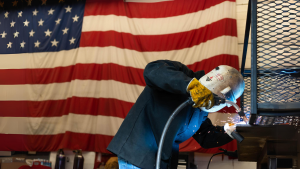
Understanding Different Types of Failure in Pressure Vessels
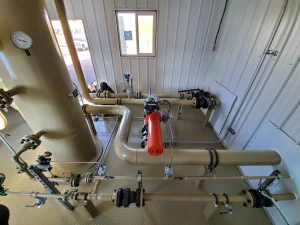
The Most Common Type of Pressure Vessel Used in Industry
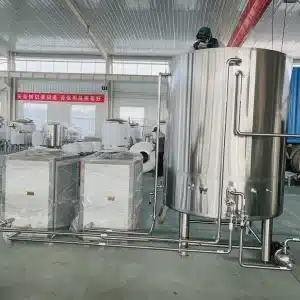
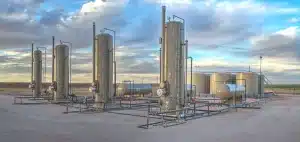
Understanding Adsorption Air Dryers
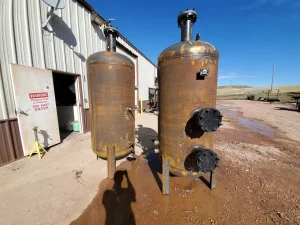
Types of Failure in Pressure Vessels
No pillar keyword set for this post.
